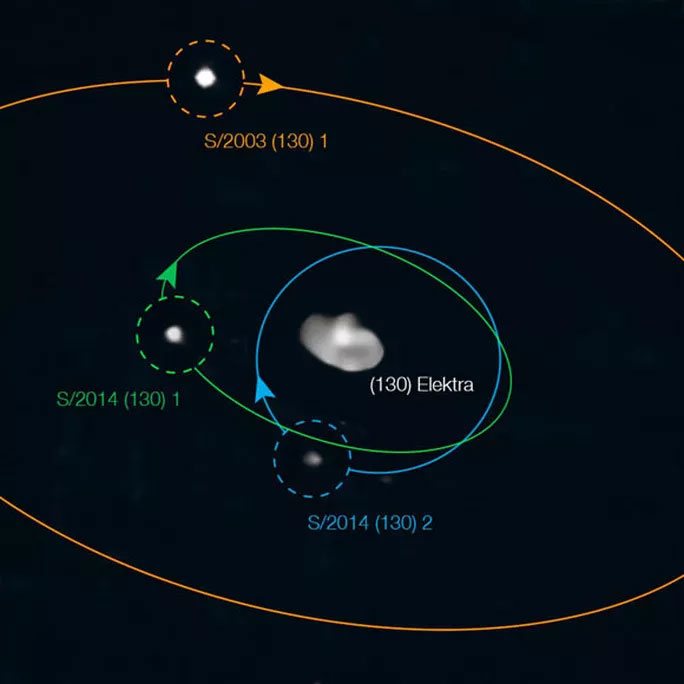130 Elektra is not just a simple asteroid; it is a complex asteroid system with three small moons orbiting the parent body, a structure that astronomers have never seen before.
After nearly 150 years, the comprehensive “portrait” of 130 Elektra has finally been revealed through research led by Dr. Anthony Berdeu from the National Astronomical Research Institute of Thailand and Chulalongkorn University.

The 130 Elektra asteroid system with the main asteroid and 3 moons – (Photo: Berdeu and colleagues)
The study, recently published in the journal Astronomy & Astrophysics, has discovered a third “moon” of the original parent body, making 130 Elektra the first confirmed asteroid system with four bodies.
The main asteroid 130 Elektra was originally discovered on February 17, 1873, by astronomer Christian Peters from the Litchfield Observatory (USA), with a diameter of 199 km.
By 2003, it was found that it was not just a single asteroid but a larger-small pair dancing in a rhythmic motion. The new object was named S2, with a diameter of 6 km. By 2014, S2, approximately 2 km in diameter, was identified.
The latest natural satellite – S3 – has a diameter of only 1.6 km and orbits the parent asteroid every 0.679 days.
All three smaller objects exhibit the behavior of moons, meaning they orbit the initially discovered asteroid body. However, S2 and S3 still require further evaluation due to the faint signals received about them.
“However, the discovery of the first four-asteroid system has somewhat paved the way for understanding the formation mechanisms of these satellites,” Dr. Berdeu stated, as reported by Sci-News.


















































